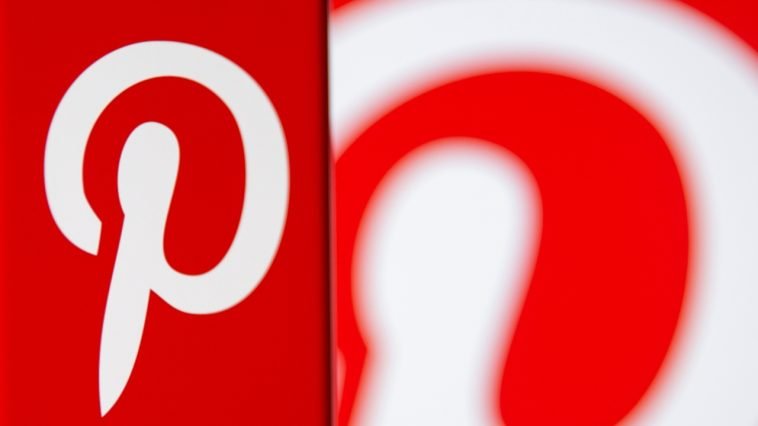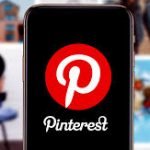Introduction.
Pinterest is often seen as a social platform for inspiration, but what many people don’t realize is that it’s a powerhouse for businesses—especially e-commerce stores like yours.
With over 450 million active users, Pinterest is not just a place to post pretty pictures; it’s a massive search engine and shopping platform rolled into one.
If you’re running a Shopify store and you’re not using Pinterest to drive traffic and boost sales, you’re missing out.
In this guide, I’ll walk you through how to use Pinterest marketing for your Shopify store. From setting up your Pinterest business account to creating pins that sell, this article covers everything you need to know to turn your Pinterest presence into a sales-driving machine.
Whether you’re new to Pinterest or have dabbled with it before, you’ll find practical steps and tips that can help you get the most out of the platform.
Let’s dive in and explore why Pinterest is such an essential tool for e-commerce stores, and how you can make it work for you.
Why Pinterest Marketing Matters for Shopify Stores
Pinterest isn’t just about collecting ideas for future vacations or wedding plans. It’s a tool people use to discover new products, brands, and ideas.
In fact, 72% of Pinterest users say they’ve made a purchase after seeing a brand’s content on the platform (source: Pinterest).
This means that when you use Pinterest correctly, it’s not just about getting followers; it’s about driving real traffic and turning that traffic into paying customers.
What’s unique about Pinterest is that people actively search for things they want to buy. It’s not like Instagram where you have to fight for attention in a busy feed.
On Pinterest, users search for keywords like “best shoes for summer” or “DIY home decor ideas,” and your product can be right there, waiting to be discovered.
So, if you have a Shopify store and aren’t leveraging Pinterest, you’re potentially missing a huge opportunity to reach customers who are actively looking for what you sell.
How Do I Set Up Pinterest for My Shopify Store?
Before you start pinning your products, you’ll need to get your Pinterest business account set up. If you already have a personal Pinterest account, you’ll need to convert it into a business account or create a new one. Here’s what to do:
Create or Convert to a Business Account
- Go to Pinterest and sign up or log in.
- If you already have a personal account, just convert it into a business account (it’s free).
- Fill in your business details—use your Shopify store name and be sure to include a clear, engaging description of your business.
Claim Your Website
After setting up your business account, claim your Shopify store’s website to show Pinterest you own it. This will let you access more features like analytics and give your profile more credibility.
Set Up Rich Pins
Rich Pins are special types of pins that show extra information about your products, like pricing and availability. By enabling Rich Pins on Pinterest, you make it easier for potential customers to get the details they need right from the pin.
How Do I Create Pins That Drive Traffic?
Now that your Pinterest account is set up, let’s talk about the pins. Creating eye-catching, high-converting pins is the key to getting noticed on Pinterest. Here’s how to create pins that will help your Shopify store stand out:
Use Vertical Images
Pinterest favors vertical images. The optimal size for a pin is 1000 x 1500 pixels. Keep your design simple and visually appealing, and make sure the image represents your product clearly.
Create Compelling Titles and Descriptions
The title and description of your pin are crucial for searchability. Make sure to use relevant keywords that your ideal customers are searching for. For example, if you sell handmade jewelry, you might use keywords like “boho earrings” or “unique silver rings.”
Add a Call to Action (CTA)
Every pin should include a clear call to action. Something like “Shop Now” or “Get 10% off” can encourage people to click on the pin and visit your Shopify store.
Use Text Overlays
Adding text overlays on your pins helps people understand what the product is, especially if it’s something that needs a bit more explanation. Keep it brief and easy to read, like “Sustainable Clothing” or “Handmade Candles.”
Leverage User-Generated Content (UGC)
If you’ve had customers post about your products, ask if you can share their photos on your Pinterest board. UGC adds authenticity and trust, making potential customers more likely to click and buy.
How To Drive Sales with Pinterest Ads
If you’re looking to speed up your growth on Pinterest, paid ads are a great way to amplify your reach. Pinterest offers several types of ads, including:
- Promoted Pins: These are standard pins that you pay to promote so more people see them.
- Promoted Video Pins: Great for showing your product in action.
- Shopping Ads: These ads feature your products directly on the Pinterest feed with pricing and availability details.
Setting up Pinterest Ads for your Shopify store is simple. Just create a campaign in Pinterest Ads Manager, select your objective (like website traffic or sales), and start creating your promoted pins. You can target specific audiences based on interests, keywords, demographics, and even behaviors.
How To Measure Success on Pinterest
Once you’ve started posting pins and running ads, it’s important to track how well your efforts are paying off. Pinterest provides a range of analytics to help you track your performance, including:
- Impressions: How many times your pins were shown to users.
- Engagement: How many people interacted with your pins (like, save, click).
- Website Traffic: How many people clicked through to your Shopify store.
- Conversions: How many people made a purchase after clicking your pin.
With these metrics, you can see what’s working and adjust your strategy accordingly. For example, if you notice that certain types of pins are getting more clicks, create more of those. If your ads are bringing in a lot of traffic but few conversions, try tweaking your landing pages or product descriptions.
Frequently Asked Questions
1. How do I increase my Pinterest followers?
Increasing followers on Pinterest is similar to other social platforms—post consistently, use relevant keywords, and engage with others by repinning, liking, and commenting on others’ content. The more you show up, the more your content will be seen.
2. Can I integrate Pinterest with Shopify?
Yes! Shopify has a built-in Pinterest integration that makes it easy to connect your store to Pinterest, set up product pins, and track your results. You can use the Pinterest app for Shopify to start pinning directly from your store.
3. How often should I post on Pinterest?
Consistency is key on Pinterest. Aim to post 5-10 pins per day, but don’t feel pressured to create all new content. You can repin your own older content or repin content from others in your niche to keep your boards active.
4. Is Pinterest better than Instagram for e-commerce?
It depends on your goals. Pinterest is great for driving traffic and sales directly, while Instagram is better for building brand awareness and engaging with your community. Using both in tandem is often the most effective approach.
Conclusion
Pinterest is a goldmine for Shopify store owners who want to drive traffic, increase sales, and build a strong brand presence.
By setting up a Pinterest business account, creating engaging pins, and using Pinterest Ads, you can get your products in front of people who are actively searching for what you offer.
But the key to success on Pinterest is consistency and understanding what resonates with your audience.
So, have you started using Pinterest for your Shopify store yet? Or are you ready to dive in and see what it can do for your business?





GIPHY App Key not set. Please check settings